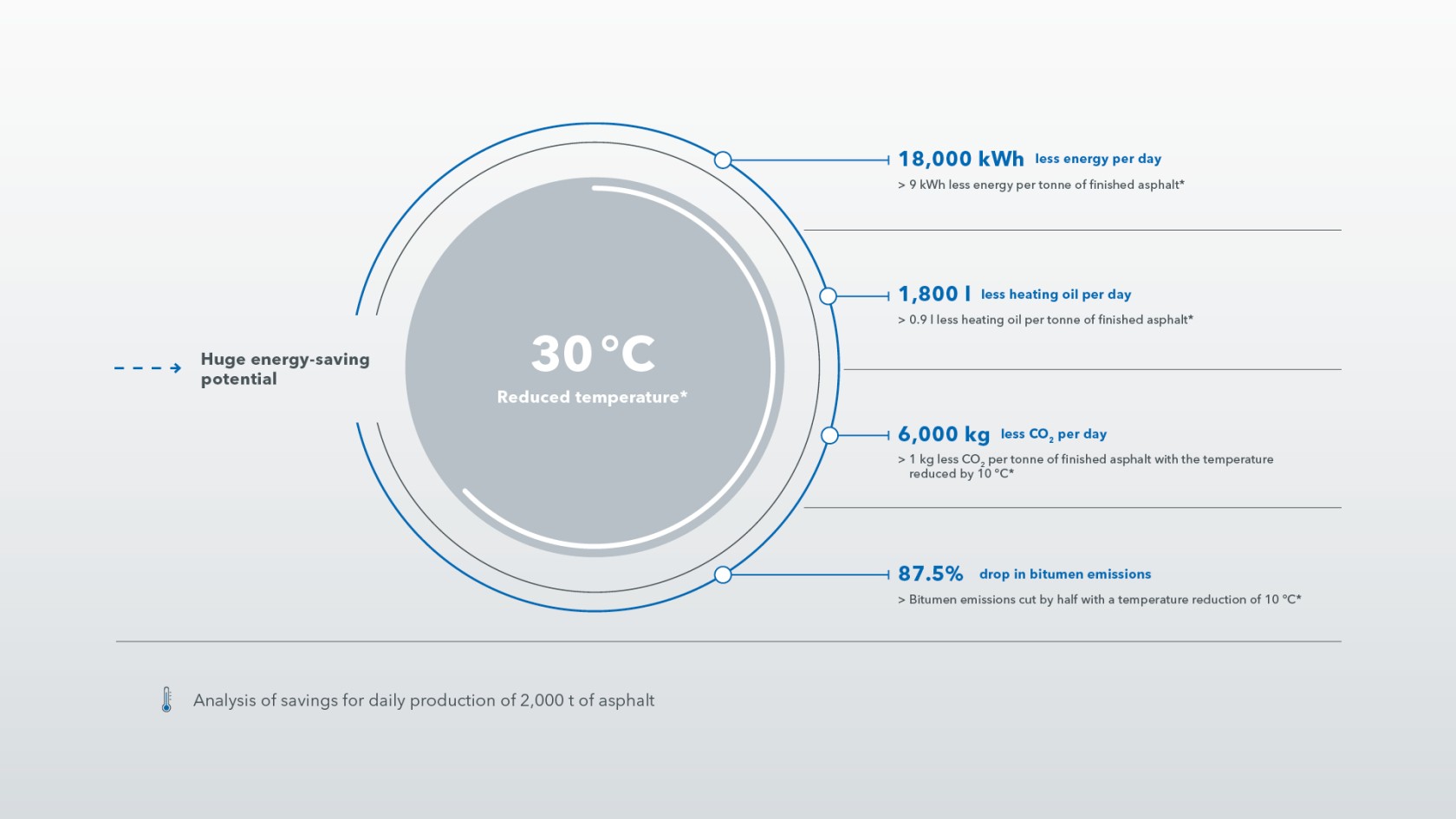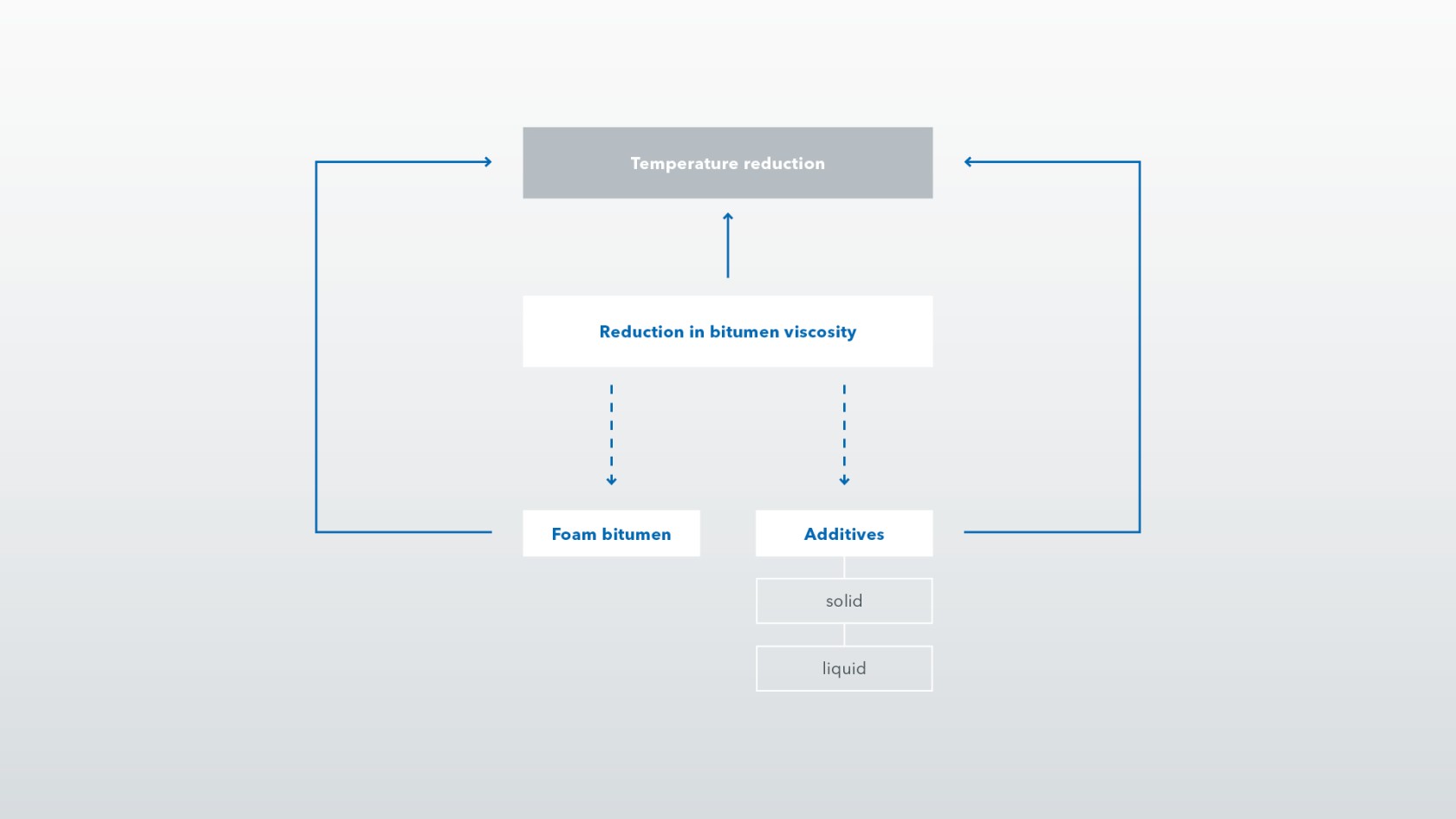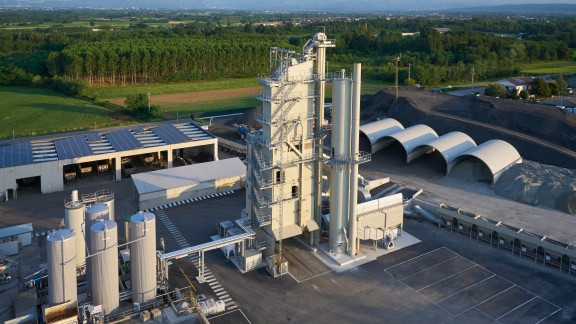What it’s all about: reducing bitumen viscosity
Bitumen is only capable of wetting and enveloping the aggregates in the mixer at a temperature of roughly 140 °C – below this, the bitumen is too viscous. So, to lower the temperature during asphalt production, the bitumen viscosity needs to be temporarily reduced. This is achieved by adding water (foam bitumen) or a number of other additives.
As the hot bitumen is mixed with water, the steam that is produced expands rapidly: the bitumen then foams up and its volume increases by several orders of magnitude. This enlarged surface area ensures better wetting of the aggregates in the mixer. As a result, aggregates can be enveloped properly even at lower temperatures. Another option for reducing bitumen viscosity is to add solid or liquid additives.
A significant drop in energy
A comparison of the various temperatures involved in producing hot asphalt, reduced-temperature asphalt and cold asphalt shows that the use of foam bitumen is capable of lowering temperatures by up to 40 °C, while still ensuring high-quality asphaltic mixtures at temperatures ranging from 110 °C to 130 °C. At the same time, energy consumption and CO₂ emissions are significantly reduced.















